Spring Newsletter 2021
Leading Article
Coronavirus support measures
Furloughing extended again
The Coronavirus Job Retention Scheme (CJRS) for furloughed workers has been extended until 30 September 2021. Currently, the worker must receive a minimum of 80% of ‘normal’ pay for their furloughed hours and this will continue through to September.
Until 30 June 2021, the position of the employer will be unchanged, namely:
- They can claim a CJRS grant to cover 80% of normal pay; but
- They must pay the employer National Insurance Contributions (NIC) plus minimum auto enrolment pension contributions on the salary actually paid to the worker, with no grant to cover these amounts.
From July, the cost of furloughing the worker will increase, as the grant will only cover 70% of normal pay, reducing to 60% for August and September.
An employee must not work for the company at all during the hours for which they are furloughed, but this can be as many or as few hours a week as are agreed between the worker and employer. An exception is a furloughed director, who is allowed to carry out any statutory work related to their directorship (e.g. preparation of accounts).
The eligibility for the scheme is being amended from 1 May 2021 to include employees who were employed on 2 March 2021, as long as a payment of earnings was reported through RTI between 31 October 2020 and 2 March 2021.
There are three possible reference dates for determining furlough pay, which depend on when the employee first had earnings reported on a Full Payment Statement (FPS) through Real-Time Information (RTI).
Grant claim deadlines will continue to be 14 days after the month-end although, as currently, most employers will want to make the claims in advance of payrolls being run.
Self-employed grants
There are to be two further grants available under the Self-employed Income Support Scheme (SEISS), both based on three months’ worth of previously reported profits.
The 4th grant (SEISS-4), covering February to April 2021, will be 80% of profits, up to a maximum of £7,500. HMRC will contact potentially eligible taxpayers in mid-April and applications will be open from late April until the end of May 2021.
The SEISS-5 grant covers May to September 2021 but is still based on three months of profits. Claims can be made from late July, but note that this grant will work differently to the others:
- If turnover has fallen by = 30%, it will be 80% of profits, up to a maximum of £7,500
- If turnover has fallen by < 30%, it will be 30% of profits, up to a maximum of £2,850
Taxpayers who started a business in 2019/20 were not eligible for the first three grants but will be able to claim the 4th and 5th grants if they meet the revised qualifying conditions, including having filed a 2019/20 tax return by 2 March 2021. However, many people are still ineligible for these grants, including traders whose profits were previously over £50,000 and taxpayers who have less than 50% of total reported income from self employment.
Various points on the new SEISS grants still need to be clarified by HMRC but it has been confirmed that any grant received will be taxable in the tax year of receipt, irrespective of the business’s accounting period.
SEISS: new grant claimants
To try to combat fraud, HMRC has been writing to newly eligible taxpayers, asking them to complete pre-verification checks to confirm evidence of trade. The letters notify them that HMRC will phone them within 10 working days. On the call, HMRC will ask the taxpayer to confirm their email address and agree to receive a link to a secure Dropbox. They will then have two days to upload one form of identity and three months of bank statements to demonstrate their business activity, before the link expires.
HMRC has confirmed it will make three attempts to phone, so taxpayers who receive the letter should check that HMRC holds the correct telephone number for them. If the number needs to be updated, they must contact 0800 024 1222 (a line only to be used for updating telephone numbers). If HMRC is unsuccessful in reaching the taxpayer, it will write a further letter. Taxpayers who receive the letter but do not complete the checks cannot claim a grant.
Recovery loan scheme
In the Budget, the Chancellor announced a new ‘Recovery Loan Scheme’. This will provide lenders with a Government guarantee of 80% on eligible loans between £25,000 and £10 million
This scheme is now open to all businesses, including those who have already received support under the existing COVID-19 loan schemes.
Business rates relief and ‘re-start grants’
Eligible retail, hospitality, leisure and nursery properties in England enjoyed 100% business rates relief in 2020/21. This has been extended to 30 June 2021, after which there will be a further 66% relief for the period to 31 March 2022 (subject to conditions and limits).
Re-start grants have been announced, as follows:
- Non-essential retail businesses can claim up to £6,000 per premises
- Hospitality, accommodation, leisure, personal care and gym businesses can claim up to £18,000 per premises as they reopen after the present lockdown
The Government is also providing £425 million to local authorities to use for discretionary grants to businesses.
The devolved authorities have their own measures to provide similar support.
Business-support fraud
The Government is aware that there have been a significant number of fraudulent claims under the various support measures (e.g. employers claiming furlough grants for hours when employees are still working or traders claiming SEISS grants when their business has been unaffected by coronavirus). HMRC may soon be on to the culprits, as it has been allocated £100m for a ‘taxpayer protection taskforce’ of 1,265 HMRC staff to combat fraud within COVID-19 support packages. Early disclosure of such matters to HMRC can reduce significantly, or even eliminate, any penalties that might otherwise arise.
Are you up to date with the revised eligibility criteria for the various support schemes? Do you think you might need to disclose information to HMRC about a previous incorrect claim? We are here to help with these and any other matters, so that you can make the most of this Government support without running into unforeseen problems.
EMPLOYEE
Company cars - lots of changes!
Take extra care when reporting company cars on Form P11D over coming weeks.
For 2020/21, there were significant changes to the percentages that need to be applied to the list price of a car when calculating a benefit, namely:
- Electric cars now have a zero benefit
- The percentage for cars up to 50g/km of CO2 emissions now takes account of how far the car can travel in pure electric mode as well as the level of emissions; and
- There are separate percentage tables for cars first registered up to 5 April 2020 and those first registered after that date
For cars purchased from April 2021, there are important changes to the Capital Allowances that businesses claim as a replacement for the depreciation is the accounts:
- New electric cars – 100% of the cost is relieved in the year of purchase (NB this was previously available on a broader range of cars)
- Cars above 50g/km (‘high emission’ cars) only attract very slow tax relief – previously this threshold was 110g/km, so many more cars are now affected
Where cars are leased rather than bought, the leasing cost in the accounts is generally allowable for tax, subject to a 15% disallowance for high emission cars. For leases entered into from April 2021, many more cars will therefore suffer this disallowance.
If you are unsure how these tax changes affect your business and its employees, please get in touch.
Veterans’ NIC relief
From 6 April 2021, a new NIC relief came in to encourage businesses to take on new employees who are veterans of HM Armed Forces. This relief, which will apply a zero rate of employers’ NIC up to the upper secondary threshold (£967 per week for 2021/22), is only available for 12 consecutive months from the veteran’s first day of civilian employment after leaving the armed services.
Employers can claim relief even if the employment starts before 6 April 2021 but will only be able to claim for the remaining qualifying period.
From April 2021 to March 2022, employers will need to pay the associated secondary Class 1 NIC as normal and then claim them back retrospectively from April 2022 onwards.
From April 2022 onwards, employers will be able to apply the relief in real time through PAYE.
If you are thinking of taking on an employee who has recently left HM Armed Forces, we can make sure you comply with all the relevant rules to get this NIC break for a year.
Travel and subsistence
The rules on tax relief for travel and subsistence are completely different depending on whether you are Selfemployed or are an employee (or director) of a company. It is easy to misunderstand them, as has been shown in two recent cases at the First-Tier Tribunal (FTT).
The Self-employed case (Hamish Taylor v HMRC (TC07893)) concerned a contractor based in Melrose in Scotland, who undertook various assignments in Swindon (for higher pay rates) and based himself there for several months. HMRC denied relief for his hotel costs in Swindon and his travel costs from Scotland.
The Tribunal held that staying in Swindon for some 165 nights during the tax year meant that his base for the work on a variety of sub-contracts was in Swindon. The disputed expenses were effectively general commuting costs for this Swindon work and so were disallowed.
Had he gone to Swindon for a specific contract, the travel and accommodation costs would probably have been deductible, as his base of operations would have still been his home in Scotland, even if the engagement in Swindon had lasted several months.
The employee case (Narinder Sambhi v HMRC (TC07717)) concerned a worker normally based in Birmingham who was sent to work at various locations in London for a period of several years, travelling home at weekends. He believed that each site qualified as a temporary workplace, so claimed relief for his travel and subsistence. He had not worked at any of the sites, individually, for more than 24 months, the statutory limit for a workplace to be regarded as temporary under the rules for employees.
The FTT found that the journey times to each site from his accommodation in London differed by no more than half an hour and the cost varied by no more than £14, so (in the Tribunal’s view) the change of worksites was not substantial. His work at various sites in Greater London should therefore be treated as one workplace, which had become a permanent workplace after 2 years. The total expenses disallowed were over £20,000.
Whether you can get tax relief on expenses is often a significant factor in deciding whether to take on new Selfemployed work far from home or, if you are an employee, in deciding to agree to a secondment.
Please speak to us to get clarity on what are often complex rules, ideally before you take on such assignments.
Personal Service Companies
6 April 2021 saw major changes to the tax rules for workers providing services via their own ‘Personal Service Company’ (PSC). Since April 2017, the worker’s clients in the public sector have had to make decisions over the worker’s tax status; this is now extended to private sector clients too, unless those clients are ‘small’. There is also an exclusion for clients that are neither UK resident nor have a fixed place of business in the UK.
Where they apply, these ‘off-payroll working’ rules replace the previous IR35 regime, meaning that HMRC cannot come after the PSC for unpaid PAYE and National Insurance Contributions (NIC), if the effective relationship between the worker and client for tax purposes is regarded as employment rather than self employment. It will be the end-client, or fee-payer (if different), which will be liable to withhold the worker’s payroll taxes when paying the PSC’s invoices. Note, however, that the PSC still has IR35 tax risk where the client is either small or a non-UK business.
Any non-small UK private sector client, or public sector client, must now provide a Status Determination Statement (SDS) to the contractor and all relevant parties (e.g. a recruitment agency) in the contractual chain, at the time the contract starts or before the off-payroll worker starts work. This will indicate whether the client intends to put the worker on the payroll for tax purposes. Some businesses contracting with PSCs have been slow to issue these, so if you have not received one you should chase this up with your client.
If the contractor disagrees with the decision made by their client on the SDS, they can ask the client to reconsider it.
We can help you decide whether an SDS appears to be correct or not.
These new rules make an already complicated area of tax even trickier to deal with. The good news is that HMRC has confirmed it will adopt a ‘light touch’ approach to penalties. There will be no penalties for inaccuracies relating to the off-payroll working rules in the first 12 months of the regime, unless there is evidence of deliberate non-compliance.
Off-payroll working: other issues
Where a client decides to deduct the worker’s payroll taxes when paying the invoices issued by the PSC, it has an impact in several other areas too, including:
- Tax relief for expenses incurred by the PSC
- The reported turnover of the PSC
- The Corporation Tax due by the PSC
- How profits can be tax-efficiently withdrawn from the PSC
We can help you understand the full implications of these changes for you and your PSC.
Is your PSC still needed?
If all or most of a contractor’s work is going to be subject to payroll taxes under the off-payroll working rules, they may prefer to become a normal employee of that client. Although this may sometimes be an option, many clients will not offer it, as it would mean the worker having full employment rights (e.g. holiday pay and statutory sick pay). This is not the case with the off-payroll rules, where the client or other fee-payer merely pays over payroll taxes, but such statutory employment rights are given by the worker’s own PSC.
Where contractors no longer need their PSC, it can be ‘struck off’ or liquidated. The trade-off between the costs and tax-efficiency of these alternatives will need to be considered.
We can advise you on whether it is worth continuing to operate a PSC and, if not, how to get rid of it and withdraw your remaining profits as tax-efficiently as possible.
BUSINESS
VAT reduced rate
The 5% VAT rate for hospitality has been extended until 30 September 2021. On 1 October 2021 it will increase to 12.5%, before reverting to the normal 20% rate from 1 April 2022.
The following are eligible for these reduced rates:
- food and non-alcoholic beverages sold for on-premises consumption, for example in restaurants, cafes and pubs
- hot takeaway food and hot takeaway non-alcoholic beverages
- sleeping accommodation in hotels or similar establishments, holiday accommodation, pitch fees for caravans or tents and associated facilities
- admissions to the following attractions, if they are not already eligible for the ‘cultural’ VAT exemption:
- theatres, concerts, cinemas
- circuses, fairs, amusement parks, zoos
- museums, exhibitions
- similar cultural events and facilities
Note that alcoholic drinks remain chargeable at 20% throughout.
If you operate a business where some of your sales are eligible for the reduced rates, you are not obliged to pass on this VAT cut to customers. This means that you can keep your gross prices the same and use the tax break to increase profit margins if you feel your prices will still be competitive.
Often, when a tax rate is due to go up, there are ‘anti-forestalling’ rules to stop customers benefitting from the reduced rate by paying in advance for facilities that they will enjoy once the rate has gone up. However, HMRC has stated that there are no plans to introduce any anti-forestalling rules before the VAT increases take place. This means that a customer can, for example, pay for holiday accommodation in September 2021 that will not be used until April 2022, but only pay 5% VAT.
Dealing with changing VAT rates produces various complications for businesses, including updating tills and making sure VAT returns contain correct figures. If things go wrong it can lead to extra VAT and penalties being due.
We can help you avoid such problems, so talk to us if you have any concerns about the changes.
Should you be VAT registered?
HMRC actively looks for businesses that have an annual turnover of £85,000 or more, as most should be VAT-registered.
It gathers information from many different sources, including credit card payments and sales by wholesalers, then analyses that data and compares it to turnover figures declared on tax returns.
This data has allowed HMRC to find businesses that are not VAT-registered, but where the turnover indicates they should be. HMRC has been writing to those businesses, asking them to register for VAT or to say why they don’t think they need to be registered.
If you receive one of these letters, you need to respond without delay, as HMRC will follow the letter up with further tax enquires. Please forward a copy of the letter to us as soon as possible, so we can advise you on the approach to take.
HMRC’s information about your business may not be completely correct.
If needed, we can help you complete the VAT registration form so that there are no omissions and no errors.
Trading losses - sole traders
With the economy hit hard by COVID-19, many unincorporated businesses will make losses this year, perhaps for the first time. A sole trader has great flexibility in how losses can be used and these rules also extend to members of partnerships and LLPs, subject to restrictions for non-active partners and limited partners.
For losses incurred in the first four tax years of a new unincorporated business, there is the option to carry back the loss against total income of the three preceding years. This can potentially lead to large repayments of tax previously paid at the higher or top rates, if the business owner was previously in high-earning employment. Otherwise, there is normally only a one-year carry-back available against total income.
However, the Chancellor has introduced a temporary extension to this one-year loss carry-back, such that trade losses can be carried back a further two years, but against trade profits only. This will produce repayments of tax where a currently loss-making business was previously profitable.
This extended carry-back can be used for losses of the tax years 2020/21 and 2021/22. For each year, there is a cap on the amount of loss that can use the extended carry-back, but as this is set at £2m it will not impact most businesses.
There are other options for losses, including setting them against Capital Gains in some circumstances, special rules on cessation of trade and carrying a loss forward against future trading profits. There are lots of detailed rules for each of these options and different dates by which claims must be made.
If your business is currently making losses, make sure you discuss with us the optimum way of using them, so that you can maximise your potential tax repayments. This will aid your cash flow in these difficult times.
Trading losses - companies
Unlike an unincorporated business, losses of a company cannot be used against the owner’s personal income or Capital Gains. Instead, they are stuck within the company, unless the company is part of a group, when it may be possible for other group companies to use them instead.
Company trading losses that have been incurred since 1 April 2017 can be carried forward to set against total profits. There is also a one-year carry-back option available, again against total profits.
To help companies generate repayments of tax that and aid their cash flow, the loss carry-back has been temporarily extended to 3 years. Unlike the equivalent rule for unincorporated businesses, the extended carry-back is not restricted to trading profits, which will be useful, for example, where a company has both trading and rental income in earlier years.
The extended loss carry-back applies for accounting periods ending in the 12 months from 1 April 2020 and in the 12 months from 1 April 2021. For each of these accounting periods, the maximum loss that can be subject to the extended carry-back is £2m.
With Corporation Tax rates due to increase significantly for most companies from 1 April 2023, it is important to quantify the possible tax savings from the different loss relief options, although in most cases getting immediate tax repayments from the carry-back option will be preferred where a company is currently struggling for cash flow.
If your company is currently making losses, we can quantify the potential tax repayments you might generate and make sure that you meet all the claim deadlines.
Capital expenditure
Capital expenditure (CAPEX) is depreciated in the accounts, but this depreciation is not allowable for tax purposes. Instead, businesses can claim specific tax allowances, but these differ considerably for ‘Plant and Machinery’ (P&M) and ‘structures and buildings’, the latter writing off the asset much more slowly. Indeed, most small business can relieve all their P&M expenditure in the year of acquisition.
The definition of P&M is not straightforward and different types can receive different rates of tax allowance.
For companies (but not unincorporated businesses and LLPs) the Chancellor has announced significant additional tax relief for P&M expenditure incurred from 1 April 2021 to 31 March 2023. Notably, this allows most expenditure on new P&M to qualify for 130% relief (i.e. £1,300 for every £1,000 spent) in the year of acquisition. With a 19% Corporation Tax rate, this gives effective tax relief of 24.7% on the amount actually spent, to encourage companies to invest in P&M prior to Corporation Tax rates going up for those with profits above £50,000 in April 2023.
This extra tax break has knockon consequences, in that there is significant extra record-keeping required and special rules when the P&M is subsequently sold.
Note that, with very limited exceptions (e.g. dual-control cars used by driving instructors and hackney carriages), cars are not eligible for these new allowances.
Vans, however, are eligible, so the next couple of years could be a good time to renew vans that your company owns.
Tax relief on CAPEX is a complex area, but the speed at which your business or company will get tax allowances may affect your investment decisions. Please speak to us to clarify the rules before undertaking any major expenditure on capital items.
Construction industry VAT
The VAT ‘domestic reverse charge’ for construction industry businesses came in on 1 March 2021. It changes how VAT must be accounted for on construction-related services provided by sub-contractors.
Where the rules apply, VAT-registered sub-contractors still issue VAT invoices, but do not actually charge VAT. Instead, the invoices will state that the reverse charge applies and show the amount of VAT that must be accounted for by their customer. No VAT is therefore payable to the sub-contractor; instead, the customer accounts for both the output tax and input tax through their own VAT return.
These changes have major consequences and give plenty of scope for errors to occur. Note, in particular, that sub-contractors who have previously used the VAT Flat Rate Scheme will very likely now be better off outside the scheme.
If your construction business is struggling to get to grips with the new rules, speak to us so that you can avoid errors and penalties.
This newsletter is written for the benefit of our clients. Further Advice should be obtained before any action is taken.






